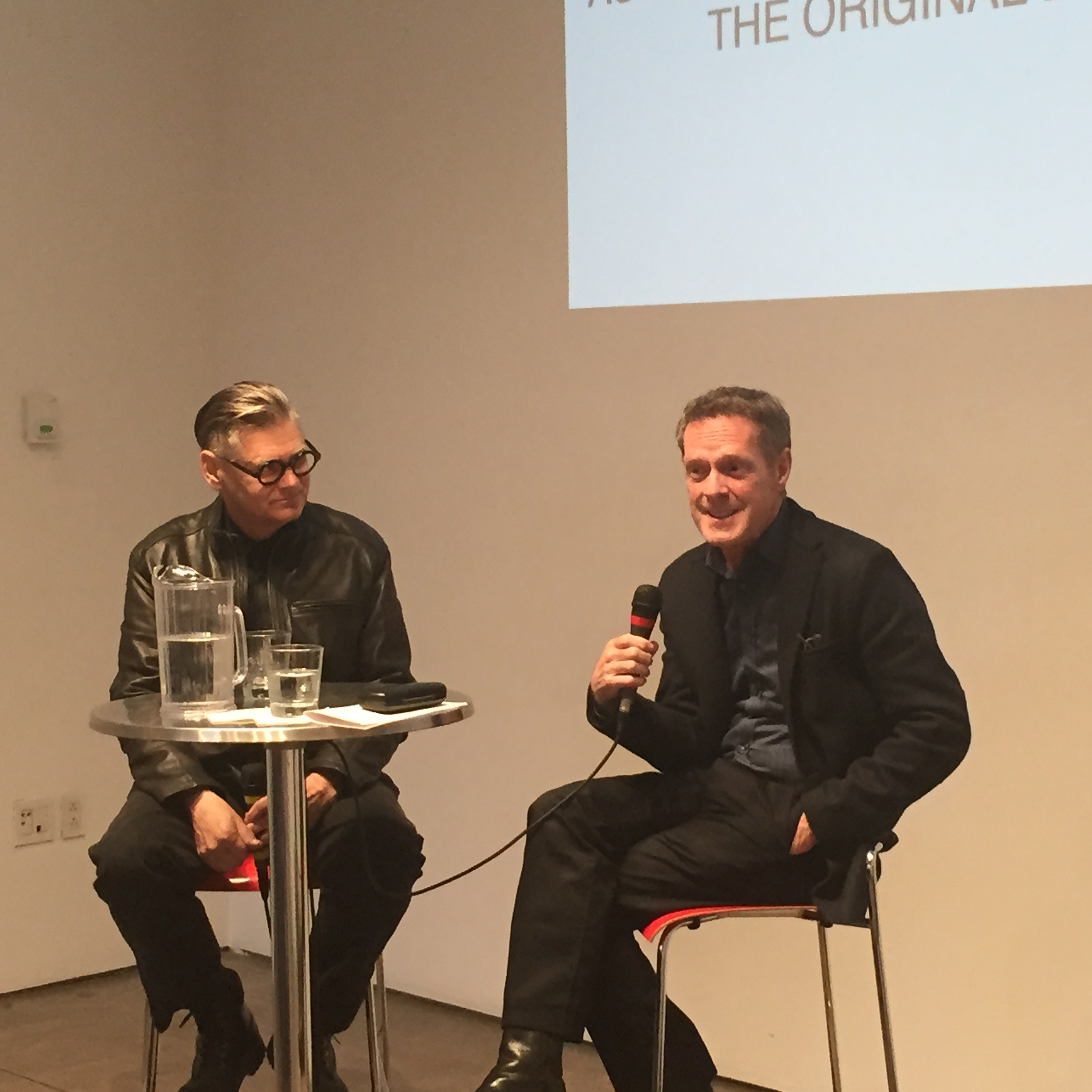by James Way
The second discussion in a series about the legacy of landscape architect Dan Kiley brought together Ken Smith, FASLA, and Gary Hilderbrand, FASLA, FAAR, to talk about Kiley’s influence, preservation issues, and current themes in landscape architecture.
Hilderbrand led with “some encounters” of Kiley works, which he characterized as “an encounter with Modernism and its remnants.” While the Ford Foundation looks as it did in the 1960s, the sky garden at the Air Force Academy in Denver does not. For Hilderbrand, this raises issues of preservation and documentation. Contemporary photography may not document what was intended, and the lack of will or funds means many landscapes are not properly maintained. Much of Kiley’s landscaping comes from trees and geometry. Hildebrand reflected: “That guy knew about trees so well! He had a bottomless desire to make order out of nature.” Whether in Columbus, IN, or in Dallas, TX, Kiley’s attention to context and public space created experiences of place. Smith echoed this sentiment in discussing the Damrosch Garden at Lincoln Center. Unfortunately, the trees have been removed, and, as Smith noted, ” were reduced to pathetic stature and continue to be reduced. Inexcusable!”
Smith outlined “Eight Reasons Not to Preserve,” a supremely sarcastic jab. Listing “Old fashioned, Unsafe, Unusable, and Weird” as numbers one through four, he cited the original Penn Station, Adventure Playgrounds, Skyline Park in Denver, and Javits Plaza, respectively, and noted that opponents label projects in numerous ways to induce derision and, ultimately, eradication. Pegging the American Folk Art Museum number five as “Obdurate,” Smith said that despite its beautiful detailing and circulation, it “did not give in to the will of the people.” “Impractical” is paving the way for building over the Frick Collection’s courtyard. Paul Rudolph’s Orange County Government Center is caught in the limbo of “I Just Don’t Like It,” which Smith called the most inarguable of categories. Number eight, “It’s Sterile and Boring,” is where Smith vented his anger at the treatment of Kiley’s Damrosch Park. The state park has suffered indiscriminate and illegal treatment that has diminished the voluptuous foliage for public visitors.
In an age of easy transportation options and Internet ubiquity, Hilderbrand reminded the audience that Kiley was deeply committed to his craft, working in places not easily accessible when he was practicing. While writing about the Miller Garden, Hildebrand visited Kiley at his Vermont office and, like many others, fondly remembers the martinis.
“The Landscape Architecture Legacy of Dan Kiley” is on view at the Center for Architecture until 06.20.15.
James Way, Assoc. AIA, Co-chair of the AIANY Marketing and Communications Committee and Marketing Manager at Morris Adjmi Architects, frequently contributes to eOculus.
Event: Contemporary Takes on Modernist Landscapes
Location: Center for Architecture, 04.28.15
Speakers: Ken Smith, FASLA, Founder and Principal, WORKSHOP: Ken Smith Landscape Architect; and Gary Hilderbrand, FASLA, FAAR, Partner, Reed Hilderbrand
Organized by: Center for Architecture
